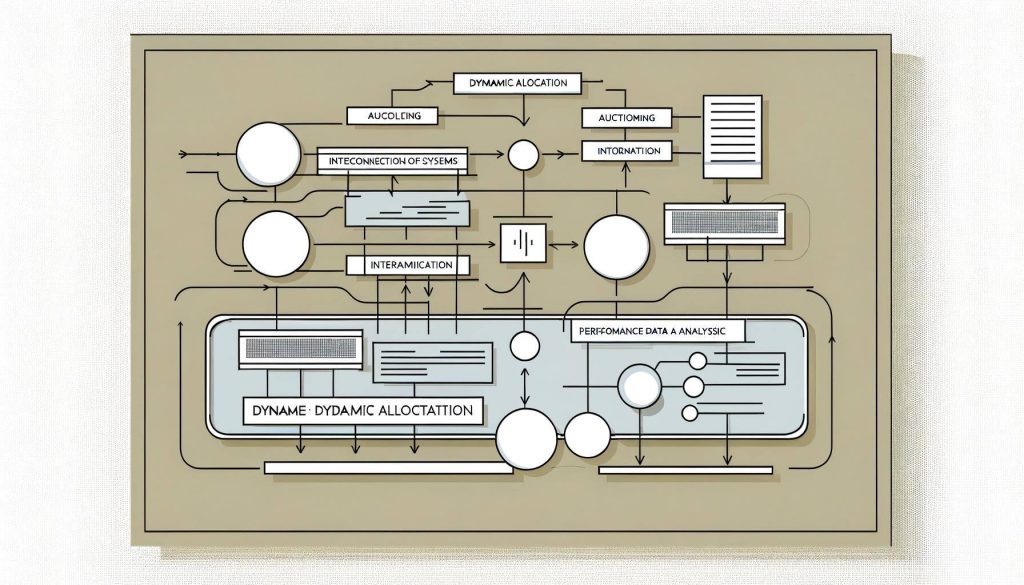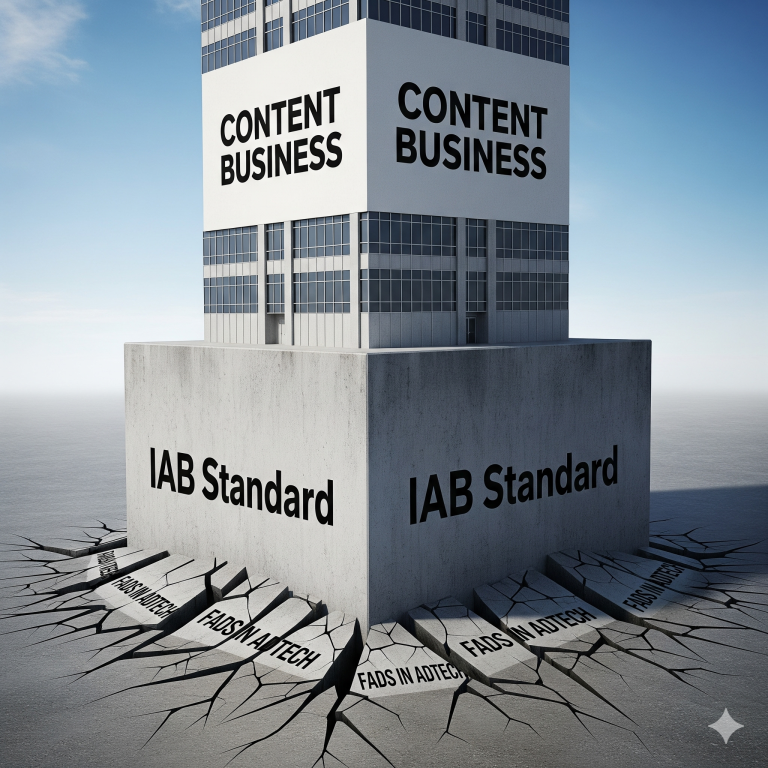Understanding Dynamic Allocation in Google Ad Manager
Dynamic Allocation is a key feature in Google Ad Manager (GAM) that plays a crucial role in maximizing ad revenue for …

February 26th, 2025
Dynamic Allocation is a key feature in Google Ad Manager (GAM) that plays a crucial role in maximizing ad revenue for publishers. If you’re a publisher looking to optimize your ad inventory and make the most out of every impression, understanding how Dynamic Allocation works is essential. In this blog post, we’ll delve into the concept of Dynamic Allocation, how it functions within Google Ad Manager, and why it’s beneficial for publishers.
What is Dynamic Allocation?
Dynamic Allocation is an ad-serving technology in Google Ad Manager that allows publishers to optimize their ad inventory by prioritizing the highest-paying ad sources in real-time. Unlike the traditional waterfall model, where ad inventory is offered to demand sources in a sequential order based on predefined priorities, Dynamic Allocation enables real-time competition between direct-sold inventory (guaranteed deals) and programmatic demand (such as Google Ad Exchange and other programmatic networks).
The key idea behind Dynamic Allocation is to ensure that every impression is served to the highest bidder, thereby maximizing the revenue potential for publishers.
How Does Dynamic Allocation Work?
To understand how Dynamic Allocation works, it’s important to break down the process into a few key steps:
- Ad Inventory Analysis: When an impression becomes available, Google Ad Manager first checks if it has any direct-sold inventory (such as sponsorships or standard line items) that needs to be served. If a direct-sold line item is eligible to serve the impression, Google Ad Manager will calculate the “predicted value” of that impression. The predicted value is based on the CPM (Cost Per Thousand Impressions) agreed upon in the direct deal and the likelihood of that line item delivering its full campaign.
- Real-Time Competition: Once the predicted value of the direct-sold inventory is determined, Google Ad Manager allows programmatic demand sources (like Google Ad Exchange) to compete for that impression in real-time. If a programmatic buyer offers a higher CPM than the predicted value of the direct-sold line item, the programmatic ad will win the auction and be served. Conversely, if the direct-sold line item’s predicted value is higher, it will win, and the impression will be served to the direct-sold ad.
- Revenue Optimization: Dynamic Allocation ensures that every impression is sold to the highest bidder, regardless of whether the bid comes from a direct-sold campaign or a programmatic buyer. This real-time competition leads to optimized revenue for the publisher, as it prevents low-value direct-sold ads from taking priority over potentially higher-paying programmatic ads.
- Flexible Priority Management: While Dynamic Allocation enables programmatic demand to compete with direct-sold inventory, publishers still retain control over their inventory. For example, they can set floor prices, adjust priority settings, and use ad targeting to ensure that certain direct-sold campaigns receive the desired level of exposure.
Benefits of Dynamic Allocation for Publishers
Dynamic Allocation offers several advantages for publishers using Google Ad Manager:
- Maximized Revenue: By allowing real-time competition between direct-sold and programmatic demand, Dynamic Allocation ensures that publishers receive the highest possible revenue for each impression. This is particularly valuable in situations where programmatic demand might offer higher CPMs than direct deals.
- Increased Fill Rates: Dynamic Allocation helps improve fill rates by providing more opportunities for impressions to be served. If a direct-sold line item cannot serve an impression, programmatic demand sources can step in, reducing the likelihood of unsold inventory.
- Efficient Campaign Delivery: For direct-sold campaigns, Dynamic Allocation helps ensure that campaigns are delivered efficiently without sacrificing revenue potential. Since direct-sold inventory competes with programmatic demand based on predicted value, publishers can balance the need to fulfill contractual obligations with the desire to maximize revenue.
- Enhanced Flexibility and Control: While Dynamic Allocation introduces real-time competition, it doesn’t strip publishers of control. Publishers can still set priorities, apply targeting rules, and use price floors to manage how their inventory is sold. This flexibility allows them to optimize their ad strategy based on their unique business needs.
- Transparency and Insights: Dynamic Allocation provides greater transparency into the performance of direct-sold and programmatic ads. Publishers can analyze how often programmatic demand outbids direct-sold campaigns and adjust their strategies accordingly. This insight helps publishers make more informed decisions about their ad inventory.
Dynamic Allocation vs. Traditional Ad Serving Methods
Traditional ad serving methods often involve a manual and sequential approach to filling ad slots, which can result in inefficiencies and lost revenue opportunities. With traditional methods, ad slots are typically filled based on a predefined hierarchy or waterfall, where certain types of demand are prioritized over others without real-time price competition.
Dynamic allocation, on the other hand, disrupts this model by introducing a simultaneous and competitive bidding process. This not only democratizes the ad selling process but also ensures that the ad slot is always filled with the highest-paying ad, regardless of whether it is sourced from direct or programmatic channels, leading to greater revenue optimization for publishers.
Conclusion
Dynamic Allocation in Google Ad Manager represents a significant advancement in ad-serving technology, enabling publishers to optimize their ad inventory for maximum revenue. By allowing real-time competition between direct-sold and programmatic demand, Dynamic Allocation ensures that every impression is sold to the highest bidder, leading to improved revenue, fill rates, and campaign efficiency. For publishers looking to stay competitive in the ever-evolving digital advertising landscape, mastering Dynamic Allocation is a must.
Related Blogs

What “IAB Standard Banners” Look Like on a Modern Website
August 27th, 2025 by Doug Bishop
In the evolving landscape of digital publishing, display advertising remains a vital revenue stream. However, the way ads are presented and filled has transformed over the past decade. It is essential for publishers to grasp the significance of iab standard banners, recognize their presence on websites, and understand their impact on monthly earnings. The Basics: […]
Read More
Google Search Console Tutorial: Checking for CWV Errors
August 26th, 2025 by Doug Bishop
As a website owner, keeping an eye on your site’s performance is crucial for both user experience and search engine optimization (SEO). Google’s Core Web Vitals (CWV) are an important set of metrics that measure real-world user experience for loading performance, interactivity, and visual stability. CWV errors can negatively impact your search rankings, so it’s […]
Read More
How Core Web Vitals Became Central to Search Rankings
August 25th, 2025 by Doug Bishop
Google’s Helpful Content Update in 2023 first exposed a painful truth for publishers: visitor experience metrics are now revenue metrics. In 2025, that reality has hardened. Core Web Vitals — Cumulative Layout Shift (CLS), Interaction to Next Paint (INP), and Largest Contentful Paint (LCP) — have become the silent killers of search visibility, draining traffic […]
Read More